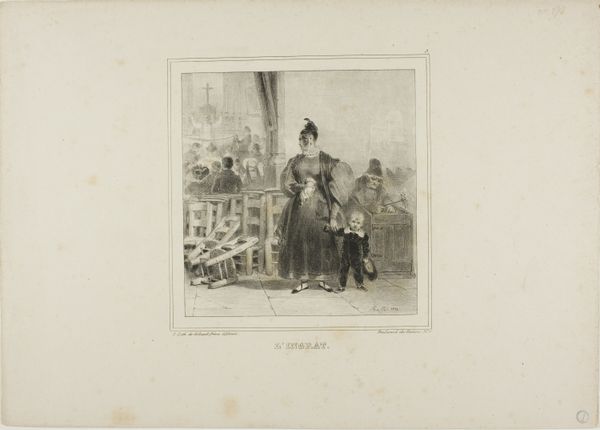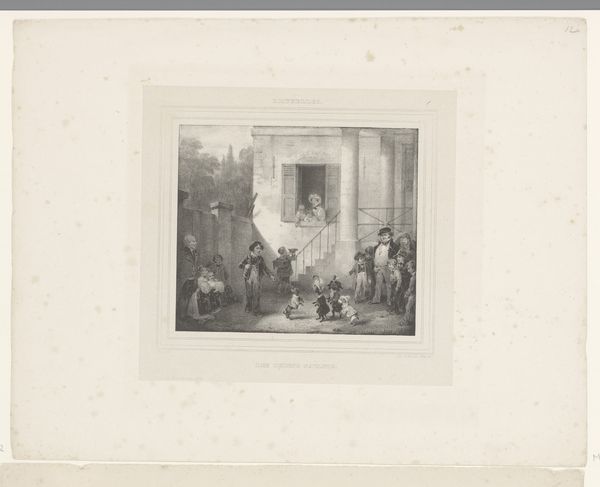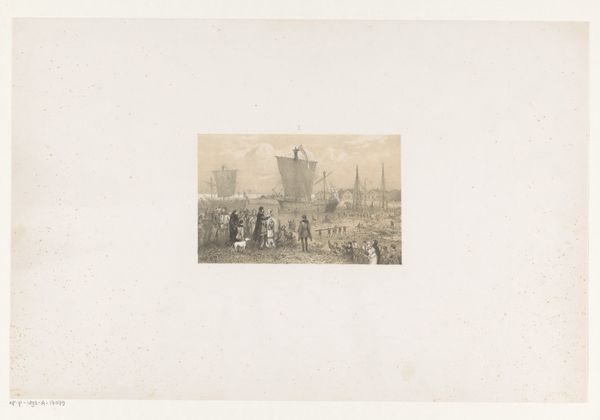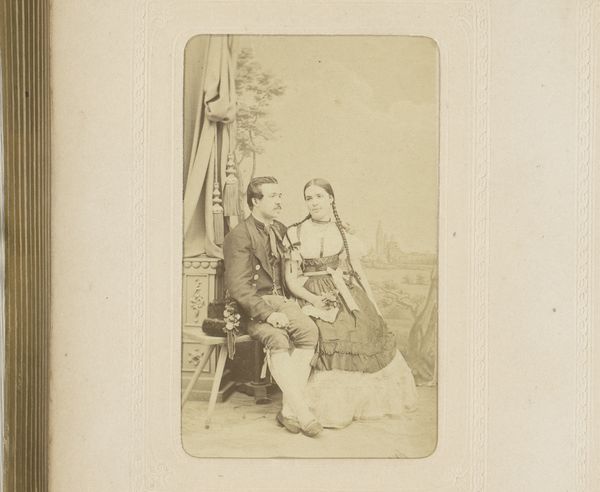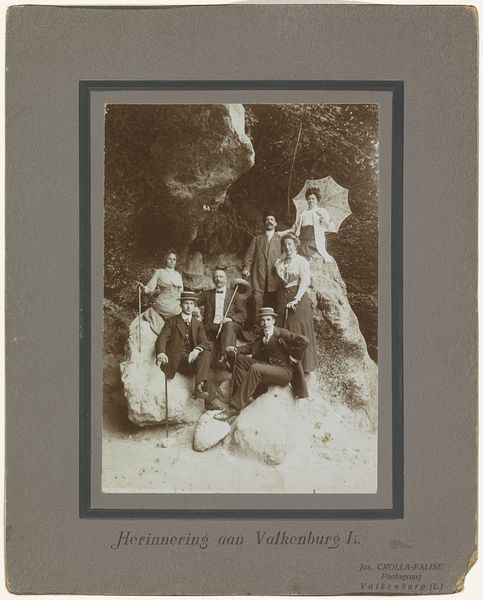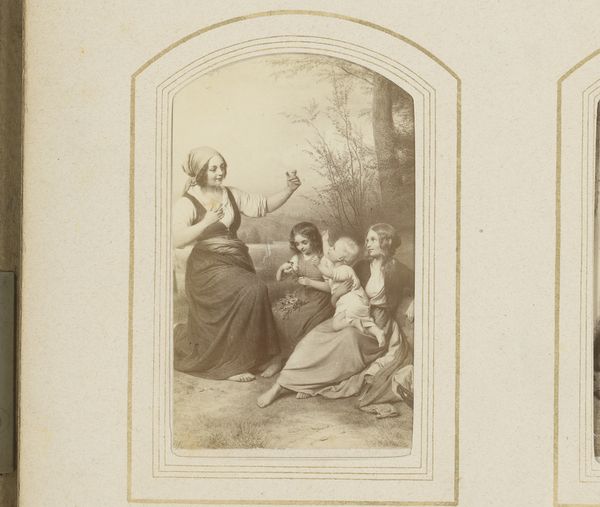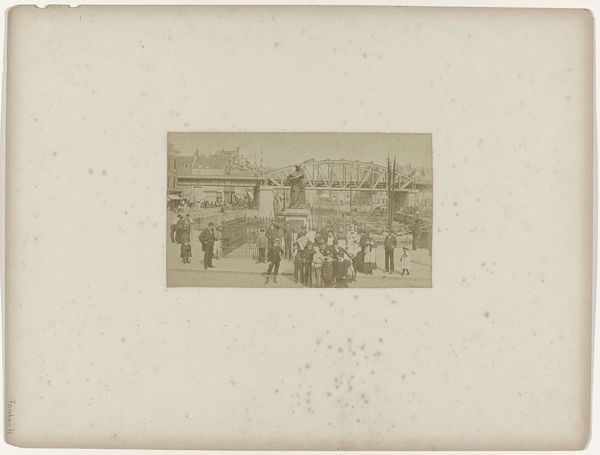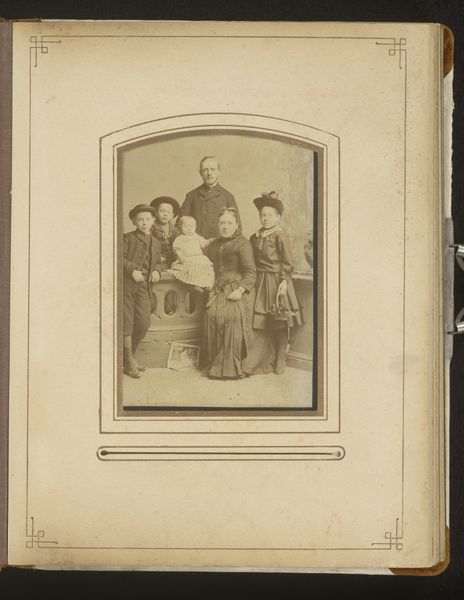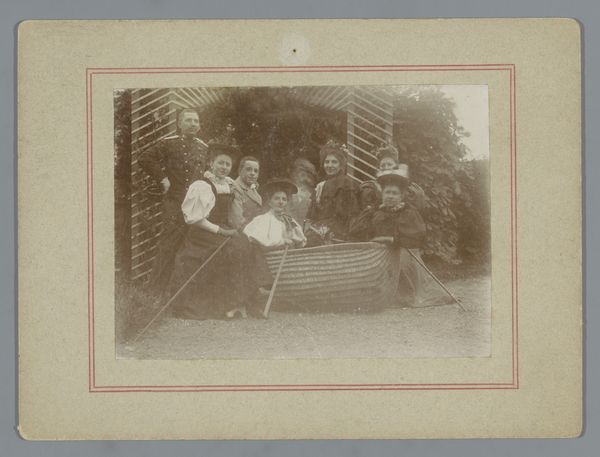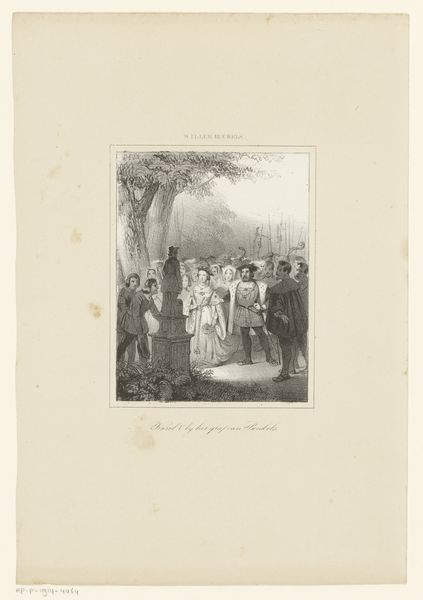
print, photography
# print
#
photography
#
genre-painting
#
academic-art
#
realism
Dimensions: height 142 mm, width 96 mm, height 172 mm, width 113 mm
Copyright: Rijks Museum: Open Domain
Curator: This photogravure from 1879 reproduces what is believed to be a drawing titled "Eerste Paasdag," or "First Easter Day" by A. Liezen-Mayer. The photographic print offers a fascinating snapshot into late 19th-century genre painting, capturing a moment in time. Editor: My first impression is that it evokes a strong sense of community but is visually somewhat muted, almost dreamlike, wouldn't you say? The figures seem frozen in a pale, almost ghostly light. Curator: That's an interesting point. This muted effect could be a consequence of both the photographic process of the era and Liezen-Mayer’s original artistic intentions. Genre painting, especially when reproduced and disseminated, served to shape and reinforce specific social narratives and cultural norms. Consider how Easter traditions were being codified and circulated through visual culture at this time. What ideologies are at play here, do you think? Editor: Well, seeing families gathered outdoors, children playing… there is a clear emphasis on generational continuity, potentially idealizing family life, and implicitly, social stability in a rapidly changing world. Notice how everyone's attending to a holy cross that seems very important to their practice. Is this representation promoting certain values, gender roles or social hierarchies of the time? Curator: Absolutely, we can delve into the ways in which family representations contribute to cultural constructs and gender norms. The figures are positioned deliberately, suggesting power dynamics and socially-approved roles within the group and perhaps the broader community. In studying the photographic reproduction, we might explore the intersection of photography, print culture, and academic artistic ideals in shaping cultural memory. Editor: Also, the presence of religious architecture in the backdrop could suggest the imposing influence of institutions during that era. Curator: Precisely! Understanding art means looking at the structures that uphold those artistic and cultural practices, to really analyze those representations of reality from that period and how that influenced them as people and members of society. Editor: Thinking about all this makes you wonder: Who were the intended viewers, and how did they interact with the images, given these complexities? Curator: Indeed. I feel this image can spur critical conversations around historical contexts and artistic representations of identity. Editor: And it urges us to re-examine conventional values encoded in visual imagery, I think.
Comments
No comments
Be the first to comment and join the conversation on the ultimate creative platform.

